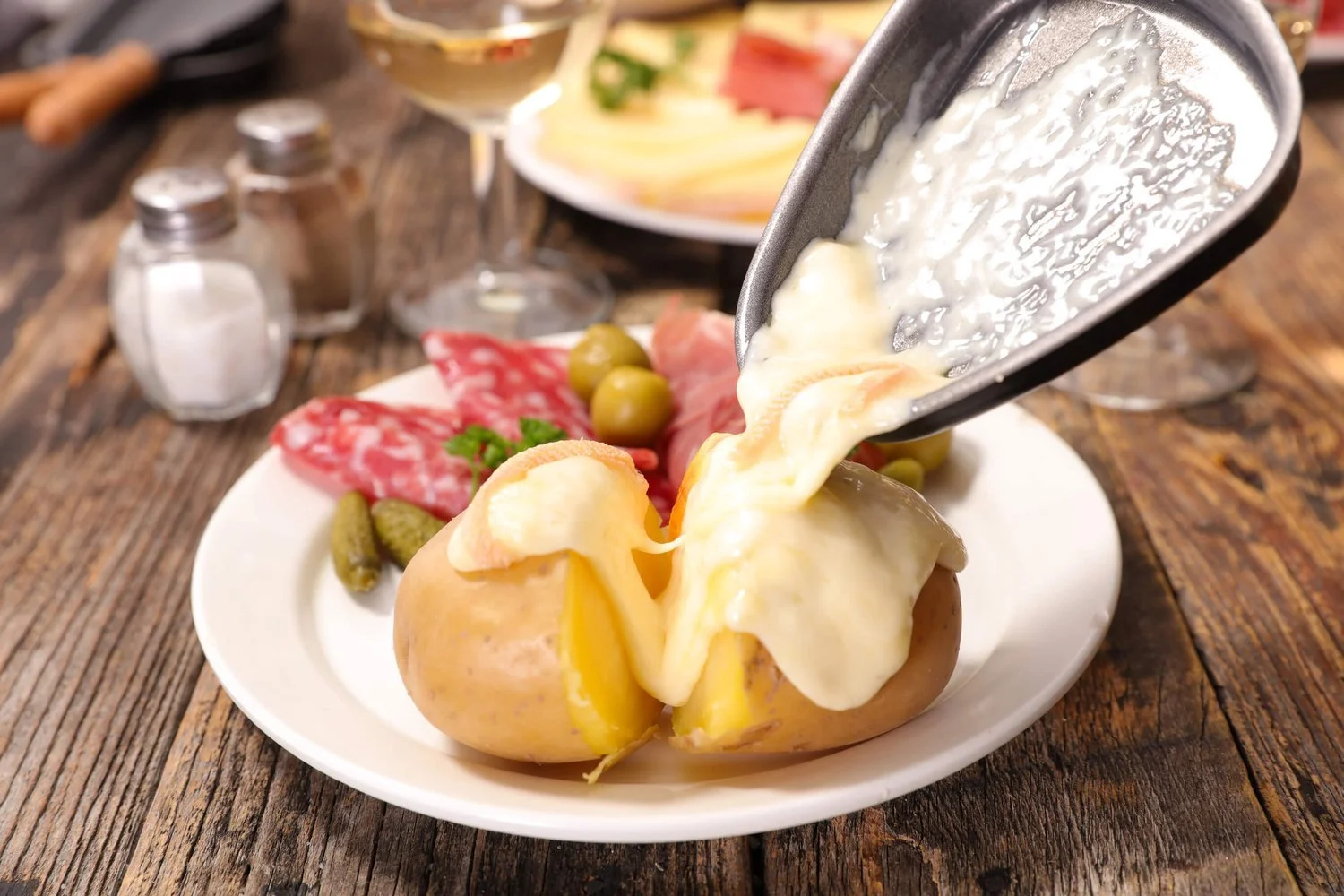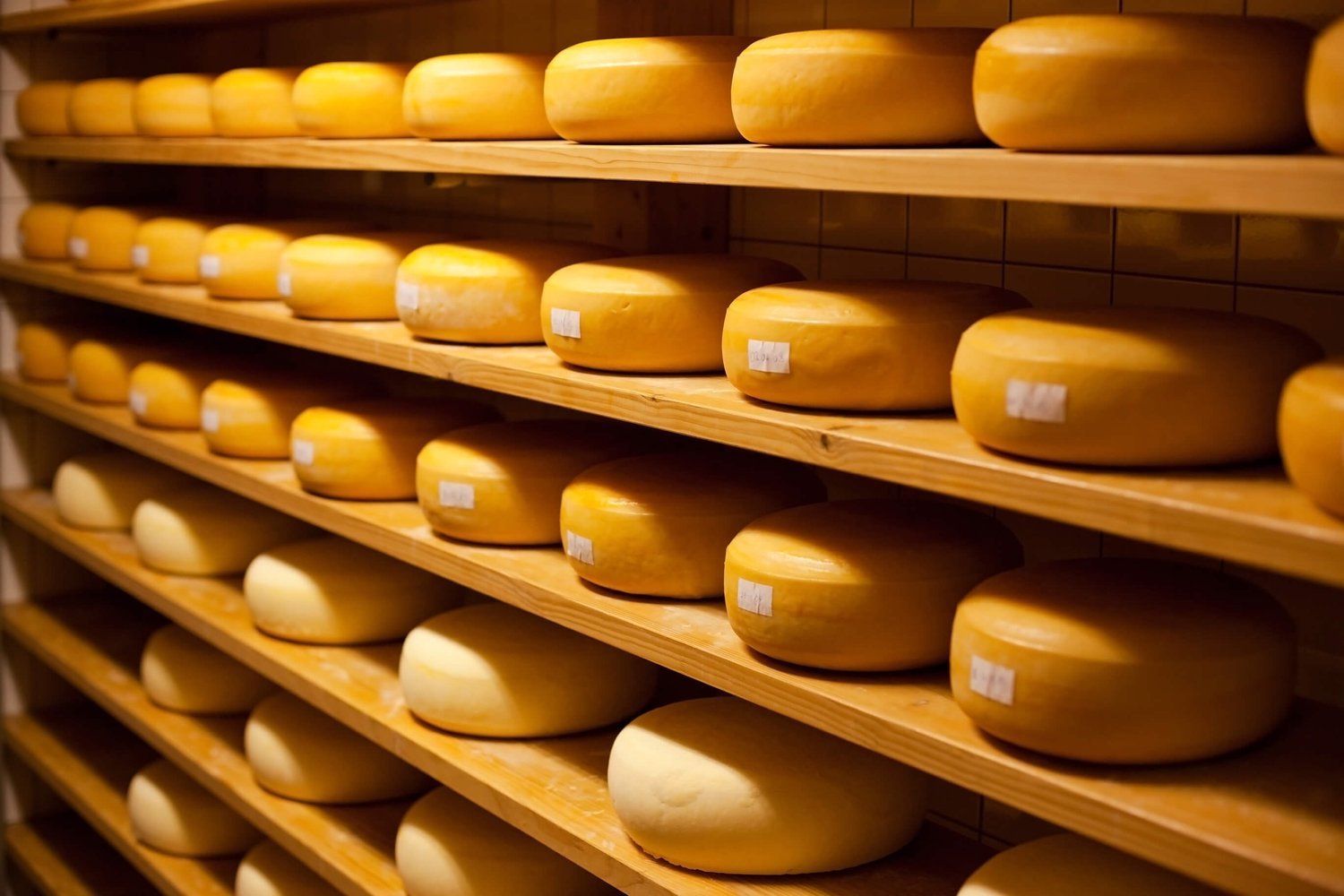Raclette 101
Raclette is having a moment in the spotlight. Usually hiding in the shadow of the famous Swiss cheese dish fondue, more people are discovering the melty, hearty dish that has been enjoyed in Europe’s alpine regions for centuries. They are often surprised to learn that Raclette not only refers to the dish of ooey-gooey cheese draped over potatoes and pickles; it’s also the name of the cheese used to make it.
HISTORY OF RACLETTE
In the southern Swiss canton of Valais, recipes calling for melted cheese date back to texts found in convents in the late 13th century. Peasant cattlemen would guide their herds to and from the mountain pastures, a practice called transhumance. As this practice could take days or weeks to accomplish, they brought provisions with them for the long journey.
Cheese was a central part of their traveling diet, being both durable and nutritious. In the 16th century, the technique of warming thick slabs of alpine cheese over the evening campfire began. As the surface melted and became pliable, it would be scraped onto bread or potatoes. The French verb ‘to scrape’ is racler, giving the dish it’s name, raclette. In fact, while enjoyed mostly as a winter dish in most of Switzerland, in Valais it is eaten year-round and especially in the summer.
RACLETTE DU VALAIS
More than just the dish, Raclette is also the name of the cheese used in the eponymous recipe. A semi-soft, washed rind cheese made from raw cow’s milk, this richly-flavored cheese is favored for its elevated fat content of up to 44%, making it an excellent melter. Wheels aged for longer than 6 months lose enough moisture that they are no longer considered suitable for melting.
Weighing up to 12 pounds, wheels of Raclette du Valais are initially brined for 24 hours to help extract moisture and create a rind, then cave-matured on pine shelves for three months before they can be sold. The unique grasses and other flora of the Valais alps give the cheese a bright, slightly tangy taste. Flavors of churned butter and cream blend with floral notes and a fruity finish.
WHERE IS RACLETTE PRODUCED?
While Raclette is made in several countries in Europe, as well as around the world, the original version, Raclette du Valais, is recognized in Switzerland as an A.O.P. (appellation d'origine protégée) product. This designation requires the cheese be made within the Valais canton, and that it meets specific guidelines for production. For example, the milk used cannot be more than 24 hours old and cannot come from more than two milkings.
Similarly styled versions are produced across Europe and the world as well, capitalizing on the original cheese’s popularity. Often called Raclette, these cheeses are typically made from milk collected from larger, stationary herds that aren’t held to the strict dietary and production guidelines called for in the Swiss AOP requirements.
HOW IS RACLETTE SERVED?
The traditional Valais way to enjoy raclette is with boiled potatoes, cornichons, and pickled onions. Warm black tea is often enjoyed with raclette because warm beverages are thought to aid in digestion, although the local white wine Fendant is also a welcome pairing. Modern raclette recipes pair this versatile cheese with apple chutney and cured meat, smoked duck breast and oranges, pureed roasted pumpkin, and other combinations.
When enjoying Raclette in a restaurant, serving etiquette differs between countries. Swiss restaurants usually employ a grattoir, a server tasked with heating and scraping raclette for guests from a dedicated table. French raclette, however, is most often presented on small cast iron heaters placed on each table for guests to serve themselves.
Originally published on www.cheeseprofessor.com.



